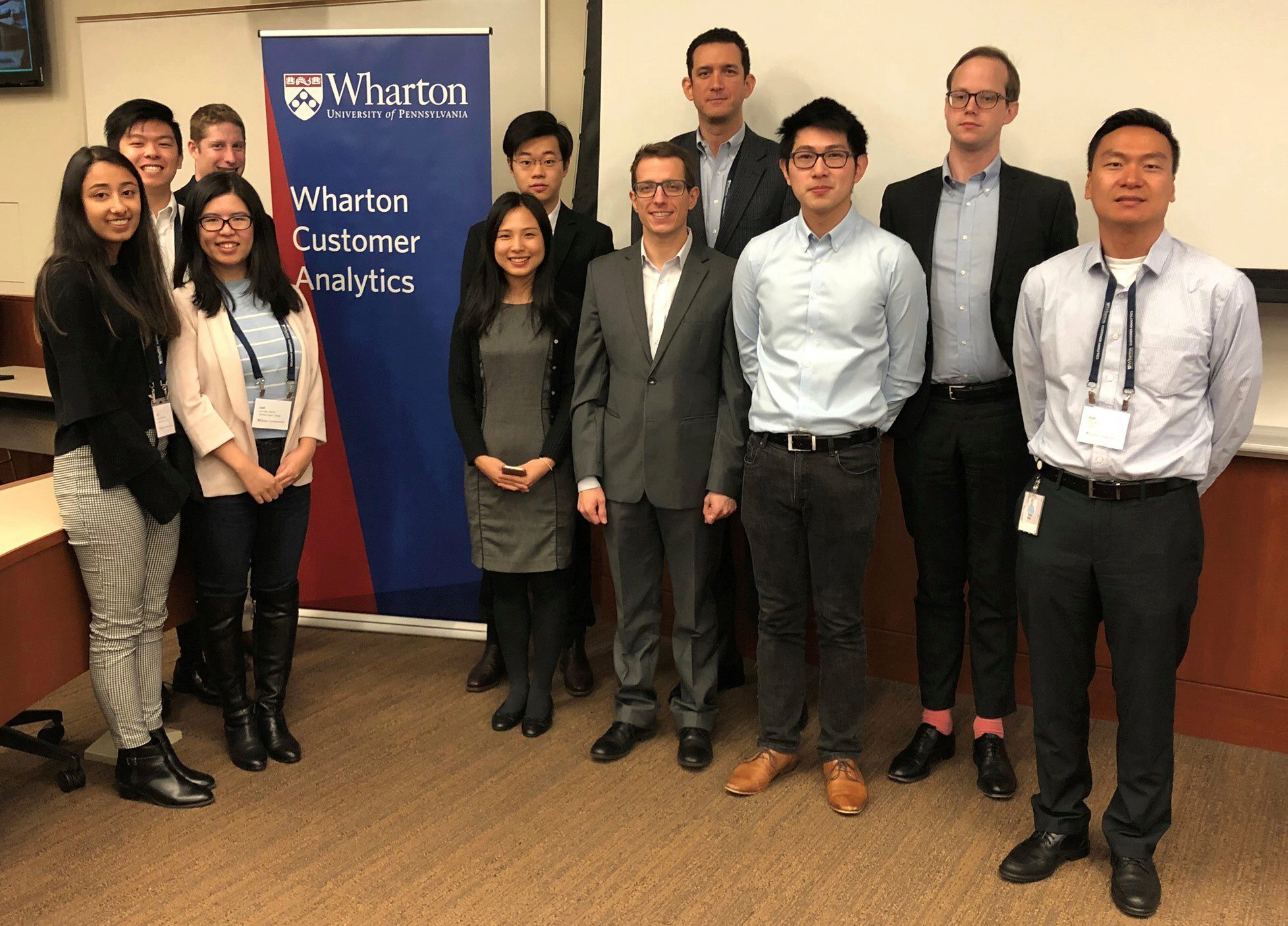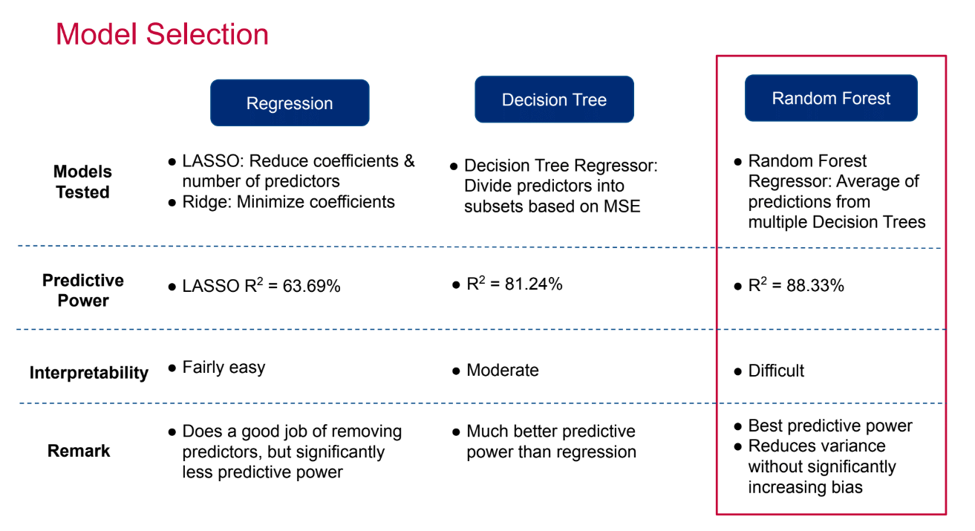Two Prices Diverge in the Wood: Using Random Forest Modeling to Optimize Price Recommendations

About Essity
Essity is a global hygiene and health company, with its headquarters in Stockholm, Sweden. The products portfolio contains one-use products such as tissue paper, baby diapers, feminine care, incontinence products, compression therapy, orthopedics, and wound care.
Verticals
- Personal Care
- Consumer Tissue
- Professional Hygiene
Datasets
- Contract Data
- Dun & Bradstreet End-User Customer Data
- Dun & Bradstreet Distributer Data
Overview
Every fall and spring semester, AI and Analytics for Business hosts the Analytics Accelerator, an experiential learning program that pairs students with a company to solve a real-world business problem using the company’s actual datasets and the latest techniques including machine learning and AI.
Through a competitive application process, six students were selected to work on Essity’s project. This multidisciplinary team was comprised of undergraduate and graduate students from the Wharton School and Penn Engineering.
Within a short time of six weeks, the team used sales transactions and distributor data to apply an ensemble of analytics-based models to uncover key drivers of future sales. The team presented their findings to company executives at the Analytics Accelerator Summit.
Objective
The goal of this project was to develop an in-field pricing recommendation engine for distributors of hygiene products. The model would dynamically calculate the most lucrative price for products purchased by Essity’s distributors, based on profiles of the end-users (customers) and distributors, and historic pricing.
Approach
In order to understand the effect on the range, level, and variances of the contract prices, the student team had to learn about Essity’s business and its current pricing model. The team also had to learn about the complex relationship between customer characteristics and distributor contract prices, by running initial descriptive analytics on the contracts and customer variables.
To accomplish this, the team examined, cleaned, and filtered the data to ready it for analysis. They used basic summary statistics to uncover initial insights and identify specific attributes in the data that lead Essity to charge higher or lower prices for distributors. For example, some potential factors included the industry, location, and company size of the end-user customer, similar attributes of the distributor, and particular details about the specific product sold.
The last step was to use the insights learned from contract prices and company characteristics to predict future prices. The team developed models to determine end-user customer willingness-to-pay, factoring in relevant attributes with a statistically significant impact on contract price.
Model Selection
Essity required the team to build the pricing recommendation model in Microsoft Azure Databricks using Python. The team’s first approach was to run a LASSO regression model on the various variables to determine which of those variables were predictors of price. However, given the large number of levels for multiple categorical variables and the few predictors that were dropped, the team decided not to utilize the LASSO results and progressed to a different model approach.
Next, they implemented a decision tree, a predictive model using a set of binary values to calculate the target price value. Due to its high level of interpretability and ability to handle both numerical and categorical variables, this was the best tree-based model.
Lastly, the team transitioned their tree-based modeling approach into a Random Forest, which averages multiple uncorrelated trees to improve accuracy compared to the decision tree. Given the difficulty in interpreting this model, the team utilized feature importance to determine which features were having the greatest effect on predicting contract price.

Solution
After analyzing the data, the team made several recommendations on the company’s overall strategy:
- Raise prices for companies that currently have underpriced contracts based on customer and product attributes. A few existing contracts have prices lower than those predicted from the model. Essity could reassess these contracts and raise the price during the next renewal period, or when appropriate.
- Identify commonalities and raise prices on specific contracts. Identify industries or sectors among companies with underpriced contracts and aim to raise prices in those areas. This provides a more generalized playbook for the company’s salesforce to execute.
- Streamline data collection from Dun & Bradstreet (DNB) due to excess variables. In the data, certain variables are redundant or not significant in predicting the contract price. Simplify the data collection process and cut back on collecting certain variables that are less relevant.
- Run the model on specific products for price prediction. Currently, the model is run on Essity’s top three products. In the business scenario where Essity is interested in understanding the pricing behavior of a certain product, Essity can run the model on a single product type.
Impact
There are three ways that Essity could implement the model results.
- Price Optimization. Essity could optimize its pricing strategy based on the model to enhance revenue and profitability. The model is able to provide a pricing prediction based on attributes of customers and products. Essity could use the predicted price as a reference to guide its customer pricing. Based on current model results, there is room for price enhancement for certain contracts.
- Strategic Business Focus. Essity could focus its marketing and sales efforts in selected business areas. Data has shown industries and locations with higher and lower pricing. Essity could strategically choose to focus its marketing and sales efforts in the most relevant places to maximize returns.
- Cost Reduction. Remove variables that are redundant or do not have predictive power for the contracting price. Re-prioritize the data collection process to be more efficient and cost-effective. In variables where a large proportion of data is missing, Essity could consider communicating such issues to Dun & Bradstreet (DNB) to either improve or remove.
About the Analytics Accelerator
Every fall and spring semester, Analytics at Wharton hosts the Analytics Accelerator, an experiential learning program that pairs students with a company to solve a real-world business problem using the company’s actual datasets and the latest techniques including machine learning and AI.


